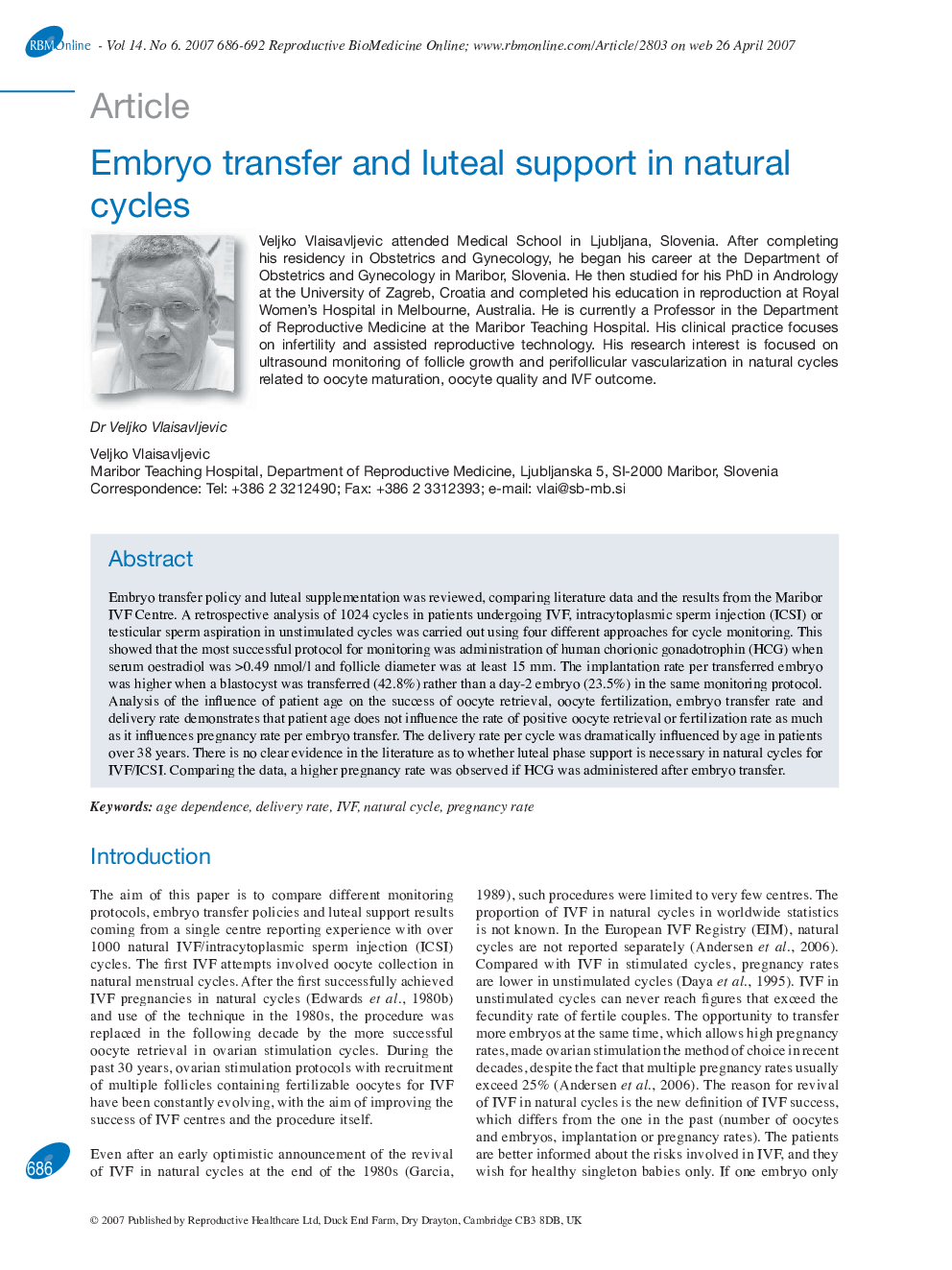| Article ID | Journal | Published Year | Pages | File Type |
|---|---|---|---|---|
| 3973454 | Reproductive BioMedicine Online | 2007 | 7 Pages |
Embryo transfer policy and luteal supplementation was reviewed, comparing literature data and the results from the Maribor IVF Centre. A retrospective analysis of 1024 cycles in patients undergoing IVF, intracytoplasmic sperm injection (ICSI) or testicular sperm aspiration in unstimulated cycles was carried out using four different approaches for cycle monitoring. This showed that the most successful protocol for monitoring was administration of human chorionic gonadotrophin (HCG) when serum oestradiol was >0.49 nmol/l and follicle diameter was at least 15 mm. The implantation rate per transferred embryo was higher when a blastocyst was transferred (42.8%) rather than a day-2 embryo (23.5%) in the same monitoring protocol. Analysis of the influence of patient age on the success of oocyte retrieval, oocyte fertilization, embryo transfer rate and delivery rate demonstrates that patient age does not influence the rate of positive oocyte retrieval or fertilization rate as much as it influences pregnancy rate per embryo transfer. The delivery rate per cycle was dramatically influenced by age in patients over 38 years. There is no clear evidence in the literature as to whether luteal phase support is necessary in natural cycles for IVF/ICSI. Comparing the data, a higher pregnancy rate was observed if HCG was administered after embryo transfer.
